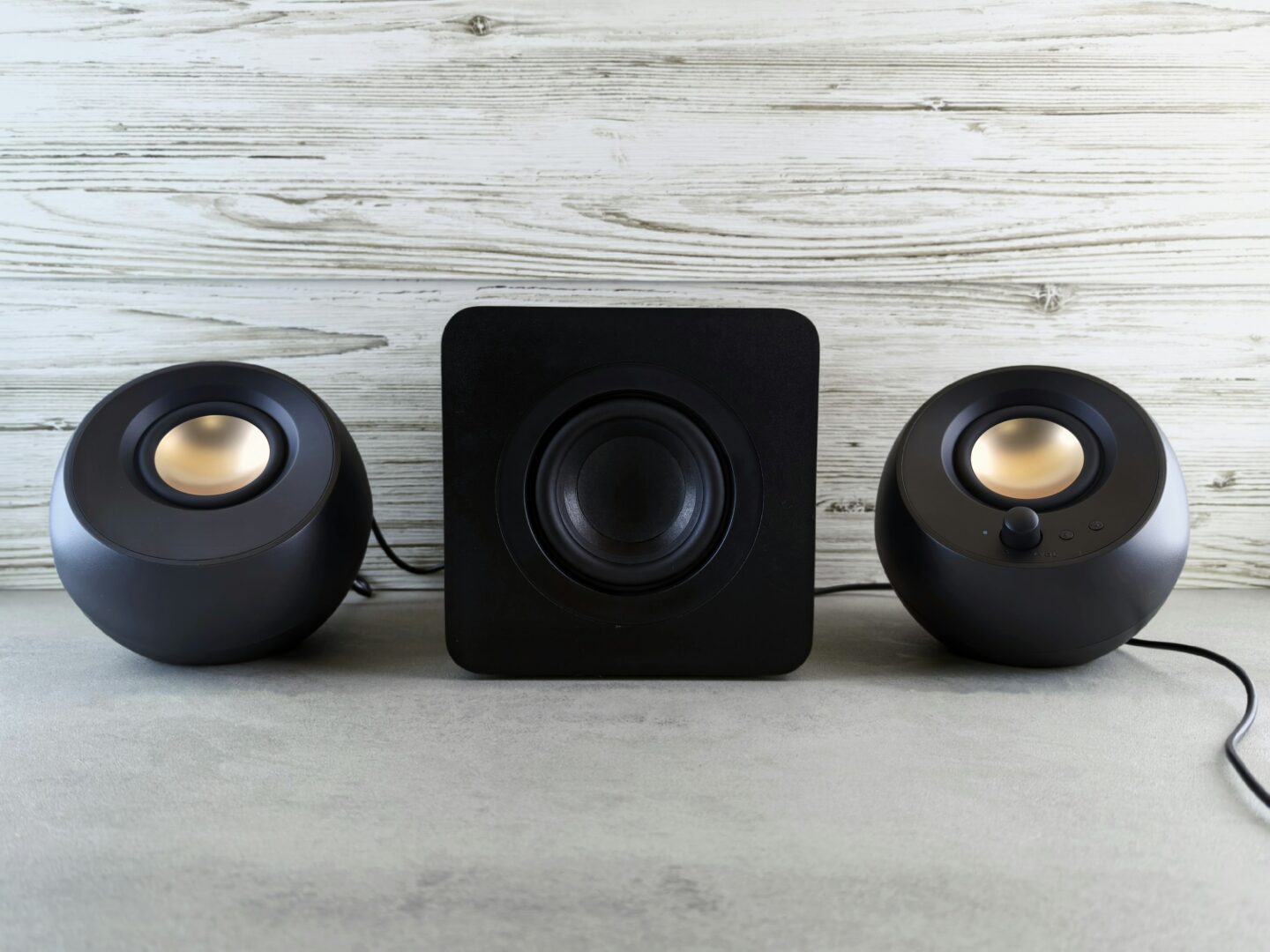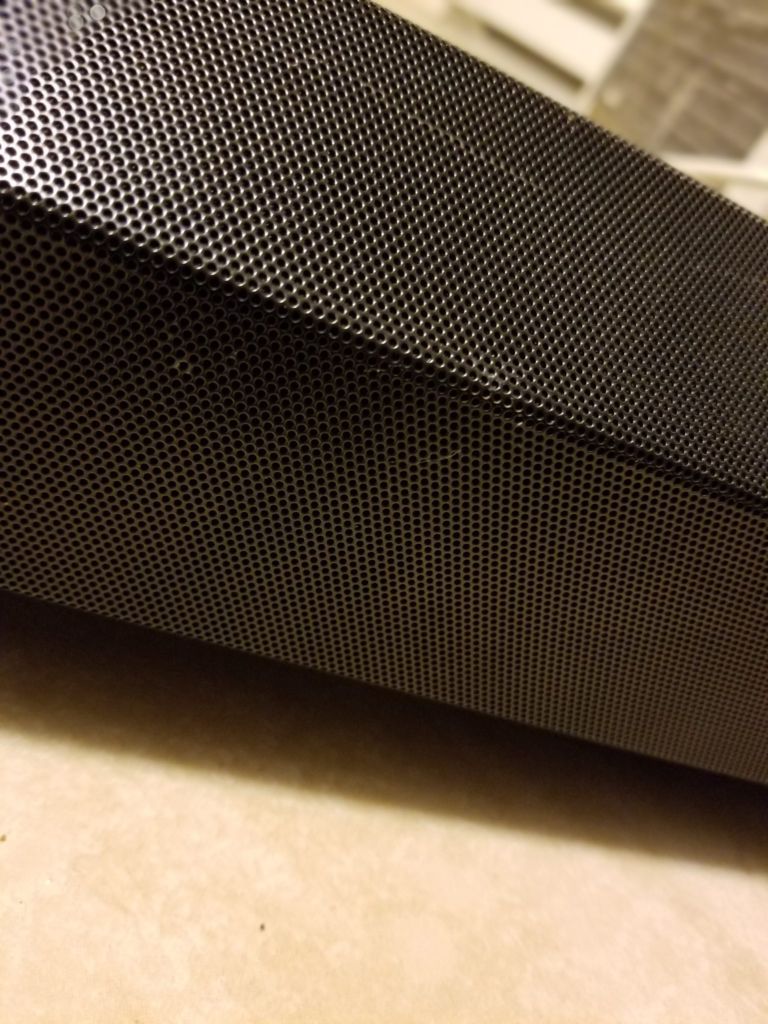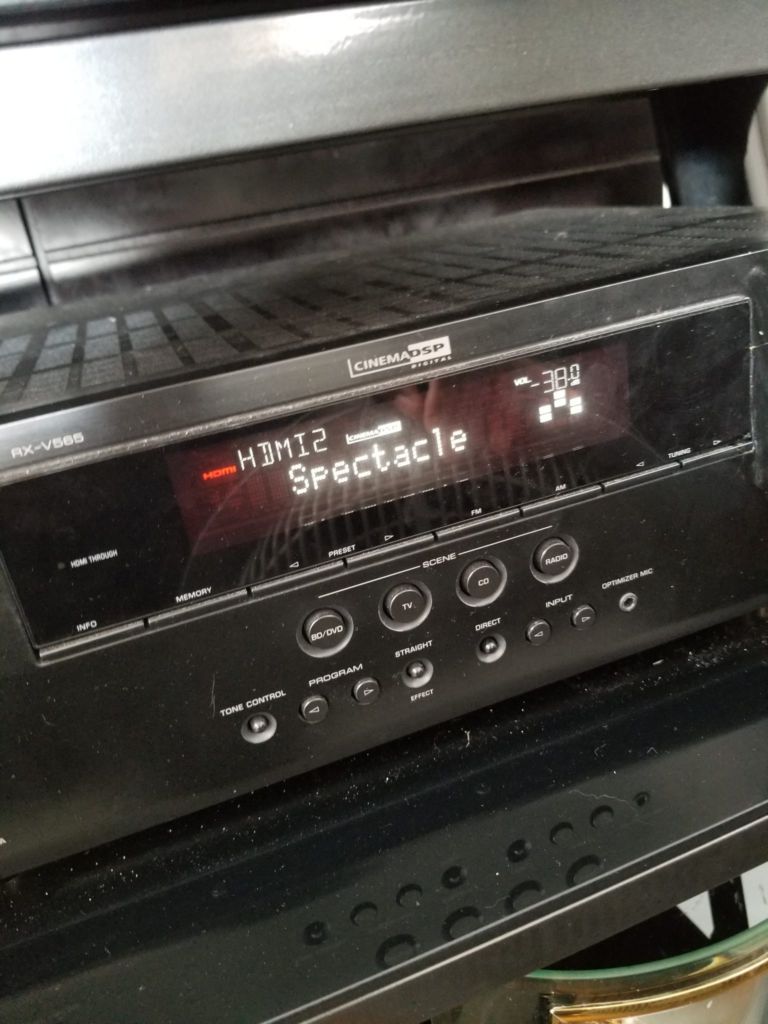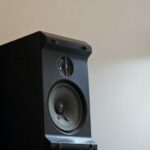What Is A Home Theater System?
What Is A Home Theater System?

Picture the last time that you went to the movies and the last movie that you saw. Remember how you felt watching that movie, what was that like?
If you’re anything like most people, then it was probably exhilarating and engaging but why?
What is it that makes it so fun; is it the super large screen, or the heart pounding bass?
Well both, and then some.
It’s the combination of exceptional picture and sound that makes the entire experience that much more enjoyable.
Now picture being able to have that without even having to go to the movies in the comfort of your own home.
That’s what Home Theater is.
Are They They Similar To The Movies?
So while a home theater can be similar to the movies depending on the setup, there are some differences too.
Here’s more on that if you’re curious specific differences between them.
9 Differences Between Watching Movies At Home Vs In Theaters
Is There One That’s Best & Should I Get One?
Now there is a lot that can go into this admittedly, but it doesn’t have to be entirely complicated (that’s why this site exists)
If you’re wondering if there’s one that’s best, this should definitely help.
What Is The Best Home Theater System? (Creating The Best One For Your Needs)
But if you’re curious if you should get one, I’d say it depends.
How often do you watch media like shows or movies?
Do you play any sort of video games?
That’d be a big factor, and if it’s even remotely often, and you have the space, then I’d definitely recommend it.
With right setup for your space, you can improve your gaming & movie watching experience dramatically.
Also, here’s some things to incorporate into your home theater that can enhance the overall experience.
25+ Awesome Home Theater Gift Ideas
Cool, What Do I Need?
So what exactly do you need to get started?
Well there’s a few options, and for simplicity’s sake along with time, I’ll only cover the absolute basics for right now.
That way you can get started right away and know what you’ll need.
A Screen Of Some Kind

So the first thing you’re going to want is a screen to view the content on obviously.
Now that doesn’t necessarily mean you automatically need a new one either.
If you’re happy with the screen you have now, then by all means feel free to stick with that.
Plus there are ways to improve picture quality with the right settings.
https://easyhometheater.net/how-to-optimize-your-tv
However if you were already in the market for a new one or considering upgrading, there’s 2 options — either a television or a projector.
Whether one option is better than the other is subjective and depends on that device; so this is what I would recommend honestly.
A Projector
If you’re specifically interested in watching on the biggest screen absolutely possible, and you have the space and budget for it, go for the projector.
It’ll wind up being a better choice over the TV IF you’re trying to go as big as possible (80 inches and up in my opinion)
While you can use them in smaller rooms, especially if they’re short throw variants, they’d need to be in an area where it’s ventilated and won’t fall.
Also, in order for a projector to be the most effective, keep in mind that you’ll want your viewing environment to be as dark as possible so that the image isn’t washed out.
Projectors use what’s known as lumens as basically a measure of their peak brightness.
To keep it simple, the more lumens it has, often the better it’ll likely perform in those settings.
This would be a really good projector & screen if you’re going that route.
Check Optoma UHD38X Projector Availability
Check QualGear 100-Inch Fixed Frame Projector Screen Availability
I also did an article covering additional options, and more detail on how projectors work in general.
https://easyhometheater.net/the-best-home-theater-projectors
It’s also possible to use the wall itself as long as it’s the proper texture and color for the room.
Here’s more on that if you chose to go that route.
https://easyhometheater.net/does-the-color-of-the-wall-matter-for-a-projector
The Television
However if you have a moderately sized viewing area, and you’re really not all that interested in going too big, just stick with a TV that you think is appropriate for your viewing conditions since in that case, that’ll be the most comfortable for you.
Some great brands to definitely consider would be Samsung, Sony, LG, and even Vizio.
Another thing to consider if you’re getting a new TV is something you’ll most likely run into called 4K.
To put it as simple as possible, 4K is an entirely new format all together.
Basically it’s the next big step up from high definition TV with 4 times the pixels. If you’re curious about that, I actually covered it here;
What is A 4K Television?
If you need some help deciding on which TV to get, this may help.
https://easyhometheater.net/the-best-tvs
The Options When It Comes To The Sound
Next thing you’ll want is sound!
Since there are quite the number of options though, I’ll cover some of the common ones.
Home Theater In A Box
One option you could take would be going the home theater in a box (or HTIB as it’s so often abbreviated) option.
One of the more common types of home theaters in a box usually have 5 speakers & a subwoofer.
There’s 2 speakers that go upfront on the left and right of the screen, a center channel speaker that goes in the middle, and 2 speakers that are positioned to the sides of your listening position.
Those side speakers are for the surround sounds like birds chirping, or people talking in the background.
You’ll often see a label on the box stating that it’s 5.1 though, and that 1 is representative of the subwoofer.
The subwoofer is different from the other speakers though.
While the other 5 speakers are usually concerned with things like dialogue and ambient noises, the job of the subwoofer is to recreate the low frequency effects like the bass and and rumbling noises.
So when say a car crash or explosion happens on screen, it will creates that rumble that makes the experience that much more immersive and enjoyable.
Why Someone May Choose To Go With A Home Theater In A Box
Why would someone choose this option?
Well a few reasons, as there are some positives to consider should you go this route.
1). It Can Be Easy To Find One
One of the positives of a pre built home theater system is that lots of big chain stores or large supermarkets carry often have some form of one, so it might not be hard to find one.
This was actually what I started with personally when I was younger by the way, and was one of my first official forrays into home theater.
I was in the store for something else, saw they had home theaters, and decided to buy one to give it a try.
So if you’re looking for one, besides online options, I’ve personally seen a lot of big stores that often carry them.
2). It Can Be Budget Friendly
They can also be more budget friendly than if you were to build your own since you wouldn’t necessarily be choosing every single component.
Part of the reason I bought my first one back then was because of that very thing.
3). It Can Be More Straightforward To Setup
Another awesome thing is they’re also pretty easy to set up, so you won’t be too confused getting started.
The manuals are usually pretty straightforward so it probably only requires plugging a few things in. Now for the negatives; the first major one being quality.
What To Be Aware Of When Choosing A Home Theater In A Box
1). The Quality Of The Actual System
That said, there are some things to be aware of too.
When you buy one of these all in one systems, be cognizant of the one you’re actually choosing.
There’s always a possibility that if it isn’t a quality one, the quality of the actual components themselves might not be the greatest — and if that’s the case, could give out on you depending on which you choose.
I would definitely be cognizant of that.
2). Some May Not Be As Powerful As A Custom System
Also note that by choosing this option, be aware of its power beforehand since an underpowered system in a larger room could be underwhelming.
Of course a good portion of them will still be more powerful than your standard television speakers, but the output & quality of its audio depends on the brand/system.
What I like to do is see what others think of the system beforehand through things like reviews or impressions to see if it’s the right fit for me.
I wouldn’t say there’s necessarily an all around best approach to figure this out since sound can be so subjective, but that’s just something I prefer if I’m going that route.
Some Examples Of Quality Systems In My Opinion
But if you choose right, there are definitely some great HTIB options that sound exceptional.
Among the many great options out there, I think the Yamaha Audio 4950U is an example of one of those awesome systems in my opinion.
Check Yamaha 4950U Home Theater System Availability
Along with that, I did an article on some you may want to consider as well.
https://easyhometheater.net/the-best-home-theater-systems
A Soundbar Setup

The next option when creating your system would be something called a sound bar. A sound bar is different from a HTIB because it isn’t a set of different speakers that you need to set in different places. It’s, just like the name suggests, a long bar where the sound comes from to put it simply.
All of the speaker’s drivers are inside this bar, and in some cases they include a subwoofer to go with it.
Why Someone May Choose To Go With A Soundbar
So why might someone choose to go this route?
Well there are some positives and negatives to consider (aren’t there always?)
1). A Soundbar Can Save Space In The Room
So the first big reason you might want to is that compared to a 5.1 system, it’s going to save space.
Lets hypothetically say you don’t have enough space for 5 speakers and a sub.
Well in this instance, simply putting the sound bar in front of the TV is going to save you space so this might be something you want to consider.
If space is something that you’re really particularly concerned with, then this could be a solid option for you.
2). It Can Cut Down On The Amount Of Wires Lying Around
By using a soundbar, you could also cut down on the amount of wires lying around in the room.
Unless you’re using a wireless surround system, the typical wired version requires speaker wire from each individual speaker.
This can be make things look cluttered if they’re not properly managed.
A soundbar however, typically uses a power cord, and then a single HDMI or optical cable.
This overall can make your entertainment center look more orderly since there’s less of them to manage.
In really small rooms this is especially helpful since you can still get quality sound without the additional clutter of a full blown setup.
It’s actually something I like in those instances myself.
3). The Soundbar Can Provide Great Sound
Something else to like about these devices is they can still be comparable in sound quality to a traditional 5.1 system.
In fact, some of my most memorable movie nights & gaming sessions have been with a high end sound bar.
It just depends on which one you choose, but the right one can contribute to an overall exceptional multimedia experience.
What To Be Aware Of When Choosing A Soundbar
1). The Sound Is Only Projected Forward In A Single Direction
However one caveat of a sound bar lies with its design itself.
Since it’s a bar and not separate speakers in varying places, the one thing it will most likely have trouble with compared to the traditional set up is surround sound.
Since the sound is only coming from one source and not from multiple angles, it’ll probably be easy to tell where the sound is coming from since it’s projected in one direction.
This could technically make it a little less immersive depending on how much you care about something like that.
Though I’ll even caveat that since there are sound bars out there that utilize technology to simulate the perception of sound coming from multiple directions through 3D sound.
These use object based sound formats like Dolby Atmos & DTS:X to bounce the sound waves off surfaces around you to create a surround sound like effect.
Some actually do this really well, but in general, the surround sound aspect is something to keep in mind.
Some Examples Of Quality Ones
There’s actually a lot of great ones out there, so here’s an article I did that actually goes over some of the best soundbars worth considering, and what to look for in a quality one.
https://easyhometheater.net/the-best-sound-bars
A Stereo Setup
Then there is the option of going for a stereo setup. This is where there’s a left & right speaker in front of the room for the sound.
Why Someone May Use A Stereo Setup
1). It’s Simpler
Someone might choose to opt for a stereo system simply because it’s simpler.
By not using a sub or additional speakers, there’s may be less adjusting that’s required.
2). They’re More Focused On Listening To Music & Watching The Occasional Movie
If you’re someone who’s more interested in listening to music and watching the occasional movie from time to time, then a stereo system might be something you prefer.
Given that music is typically recorded in stereo and is thought to be more accurate when output from 2 speakers, it makes sense why someone would choose this if their focus isn’t strictly watching movies.
3). They Prefer A Phantom Center
So the interesting thing about a stereo setup is that 2 speakers with a wide frequency range can still reproduce the effect of having a center channel.
Known as a phantom center, this where 2 stereo speakers are placed in a way where there’s still the perception of audio coming from the center.
This allows you to still enjoy an immersive sound experience without having to manage the additional space of a center speaker.
What To Keep In Mind With A Stereo Setup
1). It’s Not A Surround Sound Setup
Given that there’s 2 speakers upfront, keep in mind that surround sound wouldn’t be the focus when opting for this kind of setup
2). Make Sure The 2 Speakers Are Quality
If you’re going for this kind of setup, make sure the speakers picked are quality.
Since there’s only 2, any shortcomings could be easier to notice – especially if forgoing a subwoofer.
If I’m doing a stereo setup, I typically like to pick speakers that are not only powerful, but have a wide frequency range.
That way I can still get deep bass along with the satisfying high ends.
Some Examples Of Quality Speakers To Consider
So the interesting thing about a stereo setup is it can be used with smaller or larger speakers depending on the room.
Here’s more on what to consider depending on your preferences
https://easyhometheater.net/the-best-floor-standing-speakers
https://easyhometheater.net/the-best-bookshelf-speakers
A 2.1 Setup
A 2.1 setup is the same as the previous one except now there’s a subwoofer included.
Why Someone May Opt For A 2.1 System
1). They Prefer The Simplicity
While a 2.1 setup does include a subwoofer, there’s still not the task of having to find the right spot for surround speakers.
So by using 2 speakers and a sub, there’s still the quality output & bass present from those, while still retaining a sense of simplicity.
2). They Want The Bass That A Separate Subwoofer Provides
Another benefit of a 2.1 system is that additional bass output from the sub.
While some speakers are absolutely capable of impressive bass, a subwoofer can add an additional degree of lower end output that adds a lot to the experience.
3). A Soundbar Can Technically Be Used For A 2.1 Setup
Another pretty cool thing about a 2.1 system in my opinion is that you can technically use a soundbar as long as it has enough internal speakers.
There’s obviously all kinds of soundbars, but many support 2.1 channel sound which can make for a solid system.
What To Keep In Mind With A 2.1 Setup
1). There’s Not Surround Sound
Just keep in mind beforehand that if you do opt for a 2.1 setup, that it’s not a surround setup.
You can still get absolutely incredible sound, but just be aware of that fact.
2). Ensure That The Front 2 Speakers/Soundbar Is Quality
Just like with a stereo system without the sub, including a sub still means ensuring that your front 2 speakers are quality.
Same thing if you’re opting for a soundbar subwoofer combo instead; you’ll still want that soundbar to be capable for the room it’s in.
3). The Subwoofer’s Placement Can Affect The Cohesiveness Of The Audio
Something that I want to emphasize is that the placement of the subwoofer can affect your perception of how the overall system sounds.
Even though this is currently about a 2.1 system, I’ve found the subwoofer’s placement to be paramount in any system I’ve listened to.
For example just recently testing the sub in a different spot in my room for fun, I noticed the bass went from strong and authoritative, to almost missing entirely.
It’s amazing how big of an effect it can sometimes have, and I think highlights the importance of getting it right.
A 3.1 System
A 3.1 system involves the front left and right speaker, subwoofer, and then a center channel speaker.
Honestly if you’re not interested in having surround speakers for whatever reason be it space, money, etc. then this, or either of the previous options can work well.
Why Someone May Choose A 3.1 System
1). They Enjoy The Precision Of A Center Channel
One reason someone may prefer a 3.1 system is they enjoy precision and in their audio.
With the inclusion of a center channel, this can be a great way to achieve exactly that.
I’ve noticed that any time I get a center channel that blends well with the other 2 speakers, it adds a degree of fullness & accuracy to the overall mix that’s hard to describe, but is there.
Of course the other prior benefits also hold true like added bass with the addition of a subwoofer, and it being simpler than a full surround setup.
What To Keep In Mind With A 3.1 Setup
1). It Can Take A Little Longer To Get The Center Channel & Front Soundstage To Blend
Something I’ve noticed when you introduce a center channel is it can sometimes take a little longer to get the sound to blend than if you were to use simply a left & right speaker.
Of course that’s not always, and it depends on the capabilities of each speaker (especially if they’re timbre matched or not)
But be aware that if you do decide on a 3.1 system, that that there’s the potential of it being more involved since there’s more speakers.
There’s also no surround sound component given the audio is emitted from the front 3 speakers.
A 5.1 Channel Surround Sound System
So the main differentiator between this type of system and the others previously mentioned is the inclusion of 2 surround speakers on the left and right side.
This has several benefits.
Why Someone May Choose A 5.1 Sound System
1). The Additional Side Speakers Can Create A Surround Effect
So the biggest differentiator in my opinion is the surround sound effect you can get when you add a speaker on the left & right sides of the listening position.
This effect can make the overall soundstage more immersive, and give the impression of things happening around you.
2). Surround Speakers Can Give The Mix More Dynamism
So in addition to that previous point about surround speakers creating a more immersive soundstage, another thing that adding surround speakers can do is give the mix a better sense of directionality.
For example if you have a scene where there’s multiple conversations happening and a car passes across the screen, a setup with quality speakers can represent all of these elements to where it seems like you’re there.
What To Keep In Mind With A 5.1 Setup
1). The Aspect Of Additional Wiring
As great as having additional speakers can be, that also means their inclusion can mean the aspect of more wiring.
That’s because unless it’s a wireless setup, additional speakers means having to account for more wiring both in the actual process, as well as the management of them.
2) Setup Process Can Be Longer
Following up from that previous point, the setup process in achieving a properly blended soundstage can be longer due to more components of the system itself.
Many modern receivers have an auto calibration process using a mic that helps with this by ensuring the proper volume levels per speaker.
Ultimately though, it’s still something that has to sound right to your ears.
Plus from what I’ve noticed, everything from the amount of the reflective materials in the room, to the height of the seating position can influence the perception of that surround sound aspect in a 5.1 setup.
That’s why if you’re opting for this type of system, I’d recommend taking your time while also being aware of the fact beforehand that it could be a more involved process in getting right.
However when you do, it’s something that can make movie nights a lot more immersive & fun.
A 7.1 Channel Surround Sound System And Bigger
Now what about the people who have the space for a bigger system?
Well this is where it gets fun because it opens up to an entirely different beast.
Of course there’s 5.1, but then there’s something called 7.1 where there’s an additional 2 speakers behind you
Every 2 speakers added is indicated by the preceding number — 9.1, 11.1 etc. (speakers everywhere!)
Why Someone May Decide On A 7.1 System Or Bigger
1). They Have A Bigger Room & Want A Bigger System
If someone has a bigger room where the seating position is farther away, it can make sense to want to opt for a bigger system with more speakers — simply because of its ability to better fill the space with sound.
Additional speakers can allow for more output.
2). Setups With More Speakers Can Improve The Surround Effect
Adding things like rear surround speakers, front height speakers, etc can provide more depth to the overall surround effect itself.
So with a bigger system with more speakers, this can provide a more realistic experience.
What To Keep In Mind With 7.1 & Larger Systems
1). Setup Can Get More Complicated
The more speakers you add to a system, the more potentially complicated setup can be.
That’s for a few reasons — ranging from additional wiring, to more consideration on placement, to even just getting them to sound good together.
For simplicity sake if you’re starting out, a 5.1 or 7.1 might be easier to manage since you can upgrade as time goes on.
Here’s a few I highly recommend if you plan on going this route.
https://easyhometheater.net/the-best-bookshelf-speakers
https://easyhometheater.net/the-best-floor-standing-speakers
2). More Speakers Could Be A Larger Power Draw
Something to consider when using more speakers is they may use more power.
Of course that depends on things like the number of speakers used, the types of speakers, and even the volume they’re listened to — but a potentially larger power is something to be aware of.
Also important to consider is whether the receiver or amplifier you plan on using actually supports the usage of additional speakers and their power requirements — ensuring they perform exceptionally while avoiding potential compatibility issues.
Using Ceiling Speakers
There’s also the option of using in-ceiling speakers where the drivers, wiring, etc is installed in the ceiling/walls for a cleaner look — forgoing the larger speaker cabinet.
Though it does take more initial setup and often needs to be installed by a professional, it can be a way to still enjoy surround sound while helping maintain a minimalistic look in the room.
Here’s more on that.
https://easyhometheater.net/the-best-ceiling-speakers
A System With 2 Or More Subwoofers
Believe it or not, there’s also set ups where 2 or more subwoofers are used.
What this does is help make the bass smoother throughout the room so it’ll sound better, as long as your receiver supports that.
If you need help choosing one, or even how to set up 2 subs in the first place, don’t worry, I’ve got you covered.
https://easyhometheater.net/the-best-home-theater-subwoofers
https://easyhometheater.net/setting-up-2-subwoofers
The AV Receiver Used With The System
Speaking of which, the AV receiver you use to power the speakers is important too.
That’s because not only is it responsible for providing adequate power to your speakers, but is also the component that requires compatibility with the speakers to properly function.

To make it easy think of it this way, the receiver is like the main hub where everything is processed and sent out to smaller nodes; aka your speakers.
From there of course you get sound!
This is where you can adjust the individual speaker volume, speaker distance etc.
Another thing to remember is the receiver that you get matters, since different receivers can process the sound differently — and usually offer different EQ settings (equalization) or calibration features.
For things to consider with deciding on a quality receiver, this may help.
https://easyhometheater.net/the-best-home-theater-receivers
How Do You Set One Up?
If you’re wondering how to set one up, the process is going to depend on how many speakers you’re actually using.
For setting up a 5.1 system for example, this guide may help.
https://easyhometheater.net/how-to-set-up-a-home-theater
Also for optimal placement of your front 2 speakers & seating position, I created a calculator that may help.
https://easyhometheater.net/seating-speaker-calculator
An Outdoor Home Theater
If you have an outdoor area to your home like a patio or backyard, its possible to create an outdoor home theater too.
This is where components like the receiver still remain inside, while the wiring & speakers that are specifically designed for outdoor purposes are installed outside.
Outdoor home theater speakers are slightly different than the indoor ones, so here’s more on that if curious.
https://easyhometheater.net/the-best-outdoor-home-theater-speakers
Home Theater Recommendations
Here’s a few recommendations by the way, based on some things I think are good.
Home Theater Recommendations
Guess What? There’s More!
Believe it or not, there’s a whole lot more to consider and know about including timbre matching your speakers, terminology, and even deciding on what the best movies for a home theater are.
There’s even the option of using universal remotes in your setup which is another thing that can improve your experience.
That’s not even accounting for future developments since smart technology specifically as it pertains to home theater is always advancing.
I mean now there’s even Micro Led and 8K!
A home theater can be a truly a mindblowing experience, and if properly maintained, can be something that can last you for a long time.
Final Thoughts
Hopefully this helps offer a basic understanding though as to just what the a home theater actually is, and now you feel just a little more confident in what you may want to do in regards to your particular situation.
There’s so much nuance with the topic that it can definitely be complex; I mean hey, that’s why I wrote this in the first place as a sort of introductory overview into the basics.
Since that about does it for this one though, I really do hope this helps some since there’s all kinds of ways to can make a truly awesome system.
Until next time, make it easy, keep it simple.
About Me

Jay
Hey everyone it’s nice to meet you. I'm Jay, writer & founder of the site Easy Home Theater. I've been with this hobby of home entertainment for many years now. I decided to create this site to be a helpful resource, and share everything that I've learned from personal experience with you. I also happen to be a huge gamer, lover of all things tech related, and a major fitness buff (love weightlifting)
Contact: Contact Jay
Facebook: https://www.facebook.com/Easyhometheater/
X: https://x.com/easyhometheater
Pinterest: https://www.pinterest.com/easyhometheater/pins/
Instagram: https://www.instagram.com/easyhometheater/
Followit: https://follow.it/easy-home-theater
Bluesky: https://bsky.app/profile/easyhometheater.bsky.social
6 Comments so far:
-
-
Of course, glad I helped.
-
-
Absolutely amazing website and even better article. You break things down with great information and I’ll be using your site a lot when I finally get some time to build my own home theater. It’s a project I’ve wanted to do for a while now and this article makes me want to do it even more. Great job, my friend.
-
Haha sweet man! I mean that was the goal, so knowing I at least helped one person is seriously such an amazing feeling. Good luck with it though. I’m telling you it’s so worth it when you do. You’ll find yourself watching movies you weren’t even interested in before lol. You just get so immersed.
-
-
Wow great content love the way this website looks and feel great information I’m sharing this to my facebook great site!
-
Appreciate it, glad you found it helpful 🙂
-







Thank you for sharing all this information about home theater systems. I had no idea how much detail goes into listening and enjoying your favorite movie. Thank you for sharing this valuable information. I like how your information is organized and your different titles in this article.